
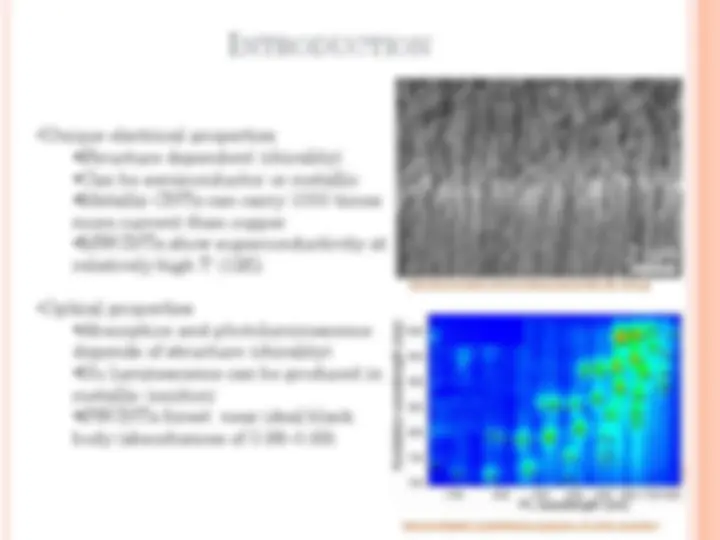
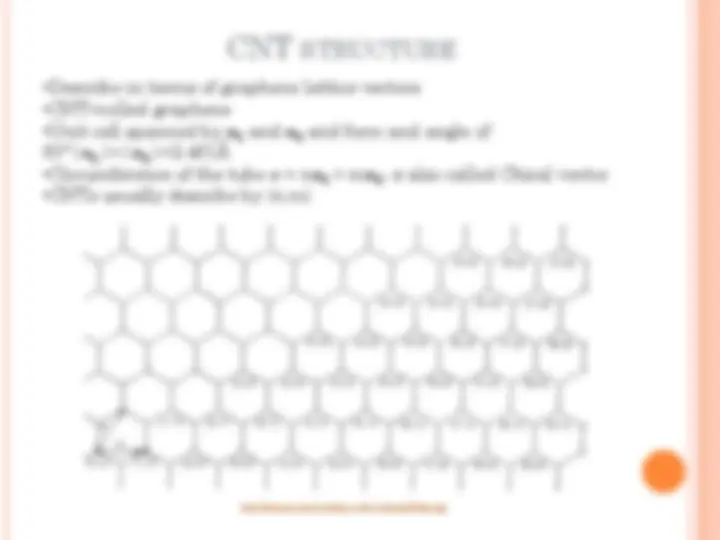
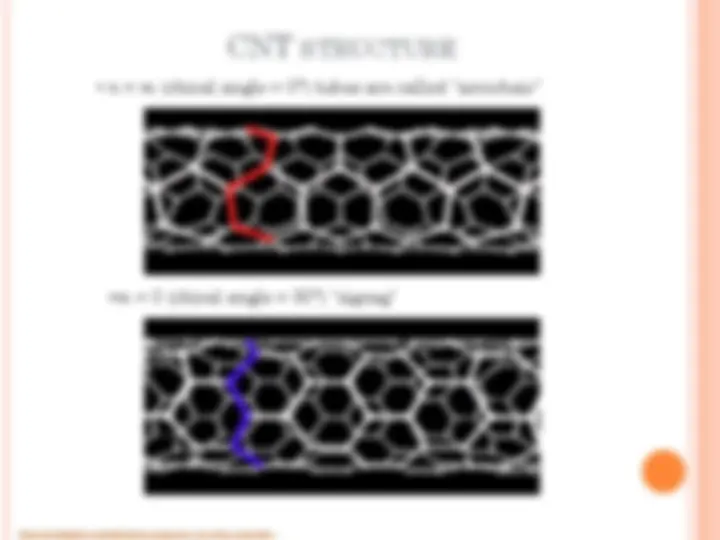
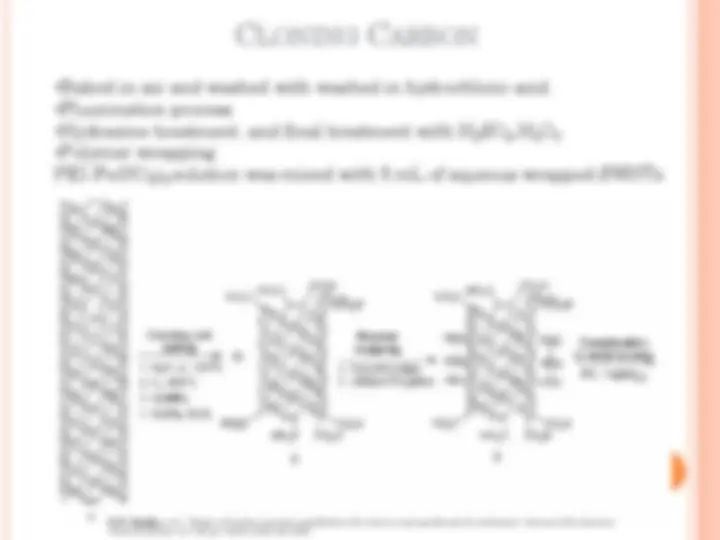
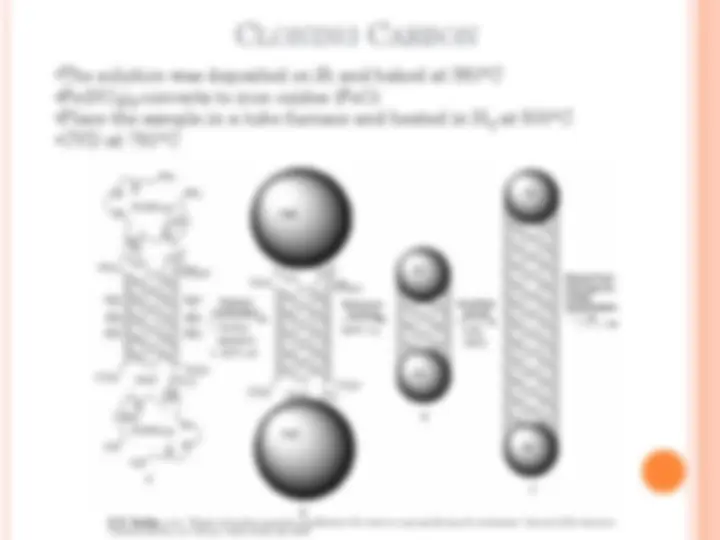
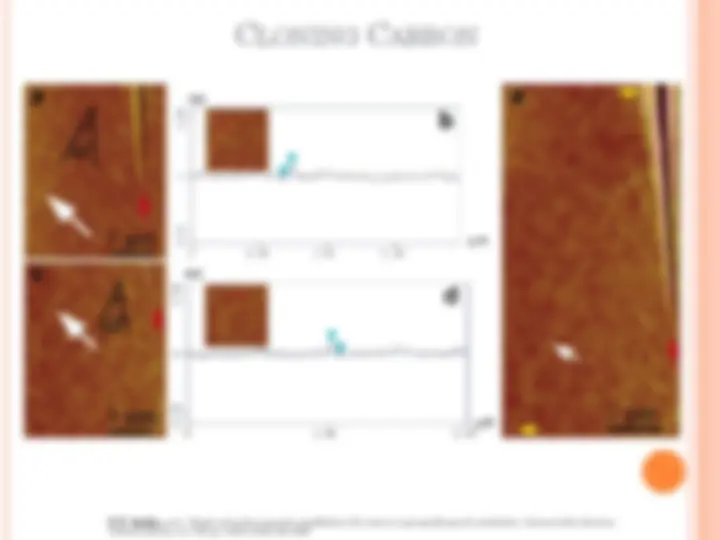
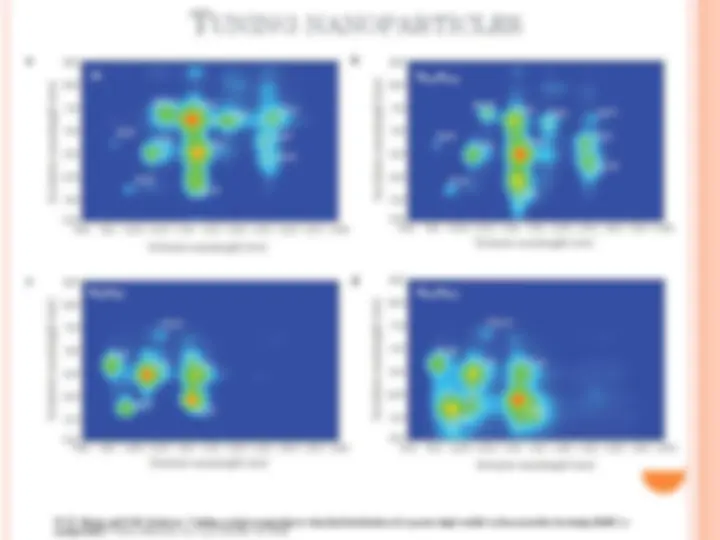


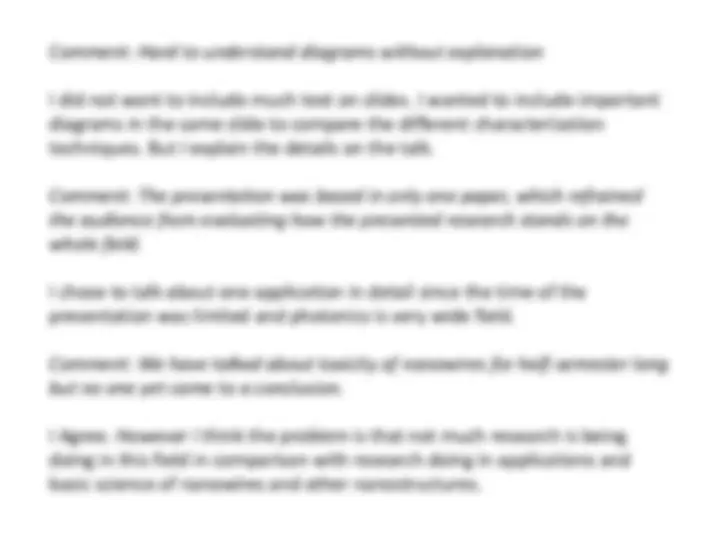
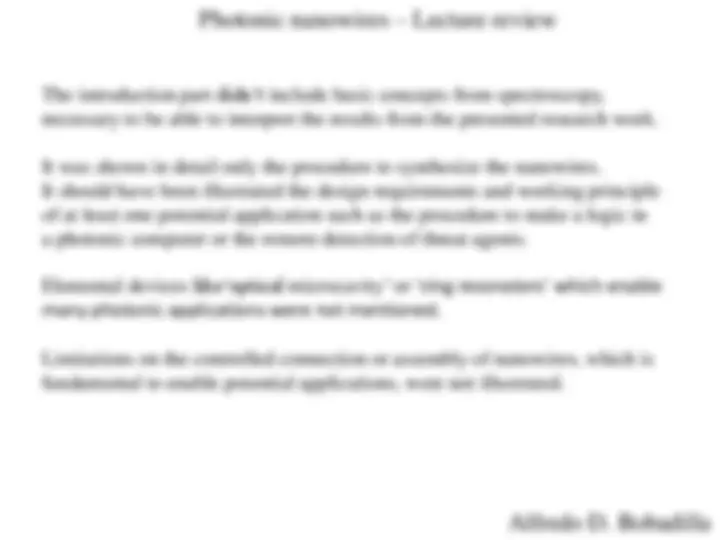
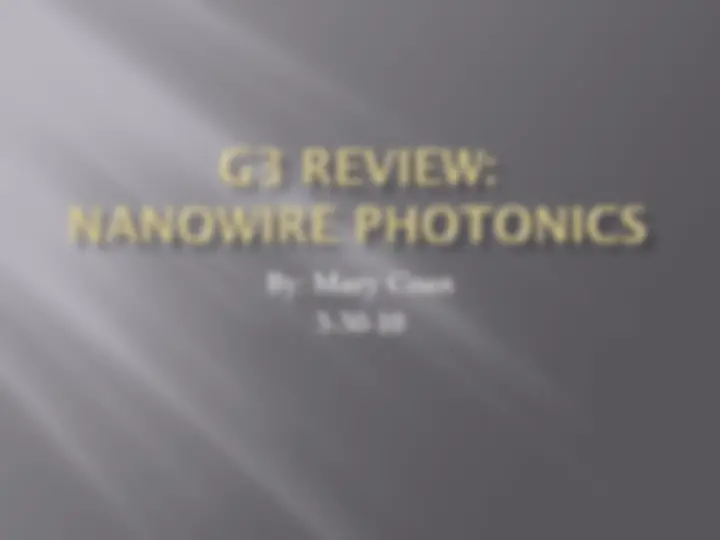
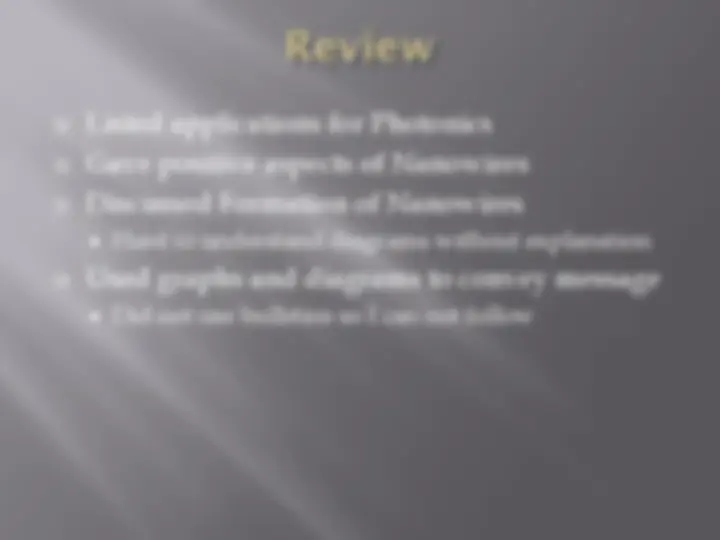
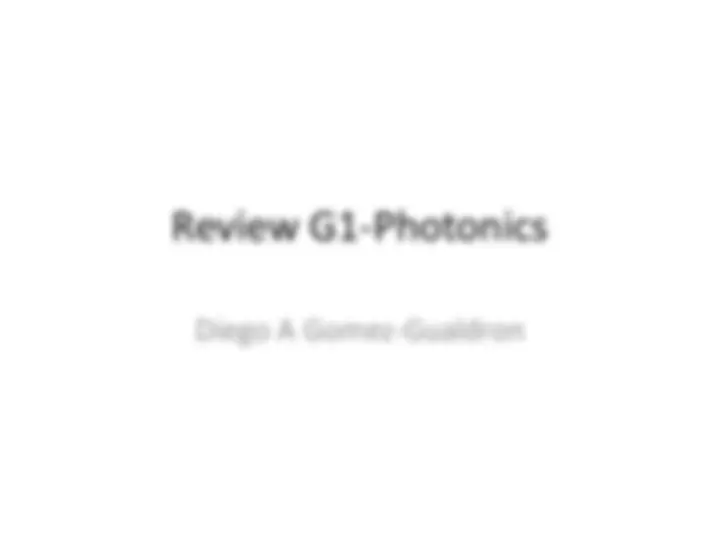
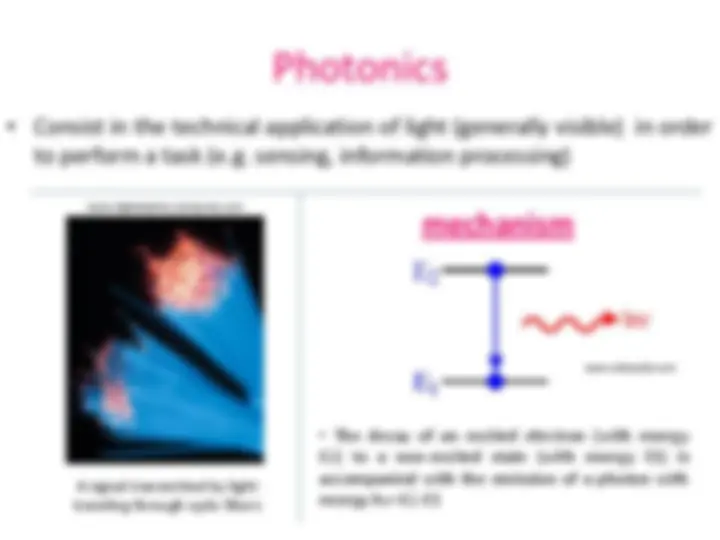
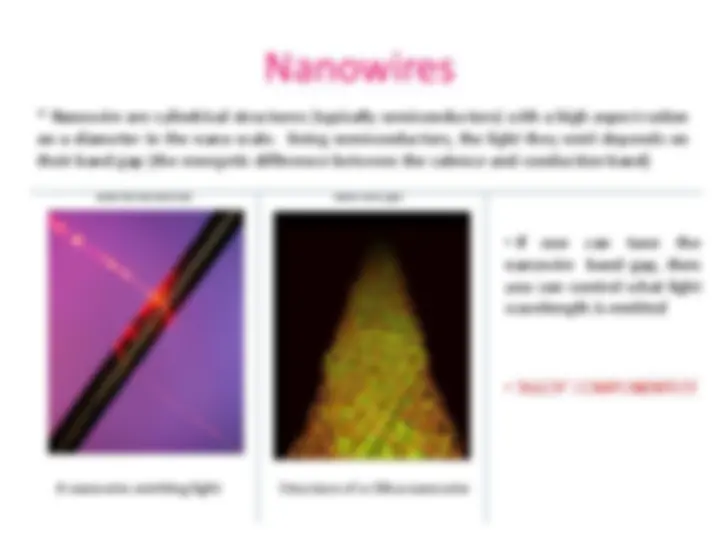
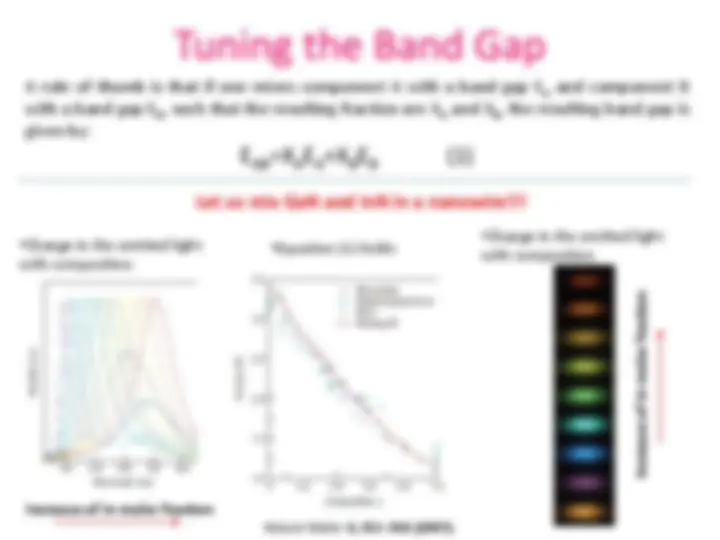



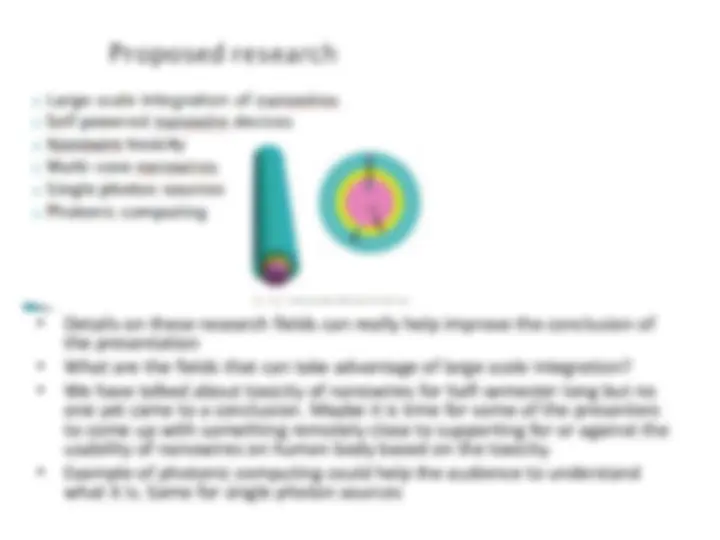


Study with the several resources on Docsity

Earn points by helping other students or get them with a premium plan


Prepare for your exams
Study with the several resources on Docsity

Earn points to download
Earn points by helping other students or get them with a premium plan
Community
Ask the community for help and clear up your study doubts
Discover the best universities in your country according to Docsity users
Free resources
Download our free guides on studying techniques, anxiety management strategies, and thesis advice from Docsity tutors
Aerospace Applications, Biomedical Sensing, Carbon Nanotube, Carbon Nanowires, Electromechanical Oscillator, Food Industry, Graphene Membrane, Mechanical Applications, Metal Organic Frameworks, Microtubules, Molecular Separation and others are main topics in this course. Key points of this lecture are: Carbon Nanotubes, Allotropes, Diameter, Efficient Electrical Conductors, Thermal Conductors, Thermal Insulators, Flourination, Toxicity, Single-Wall Nanotube, Multi-Walled Nanotubes
Typology: Slides
1 / 29

This page cannot be seen from the preview
Don't miss anything!






















Edson P. Bellido Sosa
S. Iijima, "HELICAL MICROTUBULES OF GRAPHITICCARBON," Nature, vol. 354, pp. 56-58, Nov 1991.
S. Iijima and T. Ichihashi, "SINGLE-SHELL CARBON NANOTUBES OF 1-NM DIAMETER(VOL 363, PG 603, 1993)," Nature, vol. 364, pp. 737-737, Aug 1993.
http://www.personal.reading.ac.uk/~scsharip/Wedge.jpg
http://en.wikipedia.org/wiki/Optical_properties_of_carbon_nanotubes
M. C. Hersam, "Progress towards monodisperse single-walled carbon nanotubes," Nature Nanotechnology, vol. 3, pp. 387-394, Jul 2008.
R. E. Smalley Chemical Society, vol. 128, pp. 15824-15829, Dec 2006., et al., "Single wall carbon nanotube amplification: En route to a type-specific growth mechanism," Journal of the American
R. E. Smalley Chemical Society, vol. 128, pp. 15824-15829, Dec 2006., et al., "Single wall carbon nanotube amplification: En route to a type-specific growth mechanism," Journal of the American
2.0 ppm 2.6 ppm (^) 1.3 ppm 2.2 ppm
W. H. Chiang and R. M. Sankaran, "Linking catalyst composition to chirality distributions of as-grown single-walled carbon nanotubes by tuning NixFe1-xnanoparticles," Nature Materials, vol. 8, pp. 882-886, Nov 2009.
W. H. Chiang and R. M. Sankaran, "Linking catalyst composition to chirality distributions of as-grown single-walled carbon nanotubes by tuning NixFe1-xnanoparticles," Nature Materials, vol. 8, pp. 882-886, Nov 2009.
Photonic nanowires – Lecture review
Alfredo D. Bobadilla
By: Mary Coan
3-30-